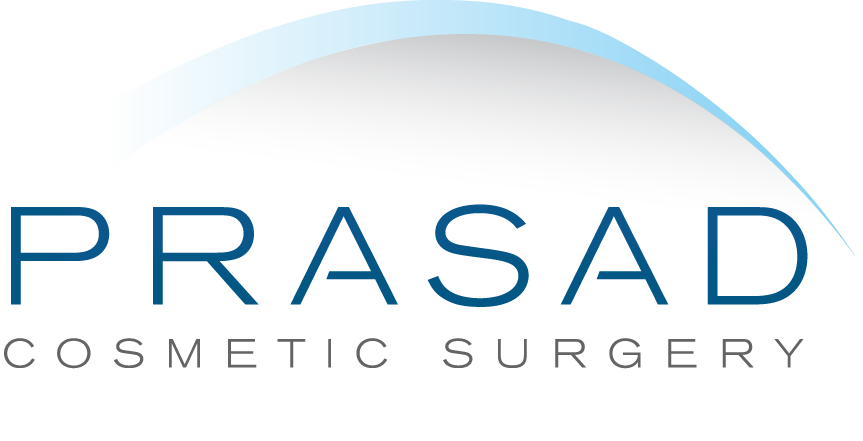Schedule Your Consultation with Dr. Prasad Here
- Home
- About Dr. Prasad
- Face & Eyes
Eyelifts
- Eyelid Surgery
- Eye lift Before and After Photos
- Asian Eyelid Surgery
- Upper Eyelid Surgery
- Upper Eyelid Hollow / Lower Brow Hollowing
- Under Eye Bag Surgery
- Eyelid Ptosis Surgery
- Transconjunctival Blepharoplasty
- Under Eye Fillers
- Eyelid Surgery Revision Specialist
- Thyroid Eye Disease
- Tear Trough Implants
- Eye Lift Questions and Answers
- Body
- Injectables
- Laser
- Hair Restoration
- Photos
- Hair Restoration Before and After Photos
- Eye lift Before and After Photos
- Upper Blepharoplasty Before and After
- Ptosis Surgery Before And After
- Facelift Before and After Photos
- Lip Enhancement Before and After Photos
- Under Eye Filler Before and After
- Blepharoplasty Before and After
- Lower Blepharoplasty Before and After Photos
- Eyelid Surgery Before and After
- Double Eyelid Surgery Before and After
- Contact Us
Laser Skin Tightening for the Body
The methods for non-surgical laser skin tightening for the face can be customized for skin tightening in other areas of the body. Laser settings can be adjusted to treat the thicker skin of the body. Special laser handpieces are changed to be able to cover larger, and wider areas of skin. As with facial skin, the scientific principle is applied to the body – treating the backbone of the skin (dermis) to contract (tighten) and generate collagen as a response to heat stimulation of the laser. The precise control of heat, and width of the laser beam ensures effective skin treatment, without excess heat which can damage skin and fat tissue
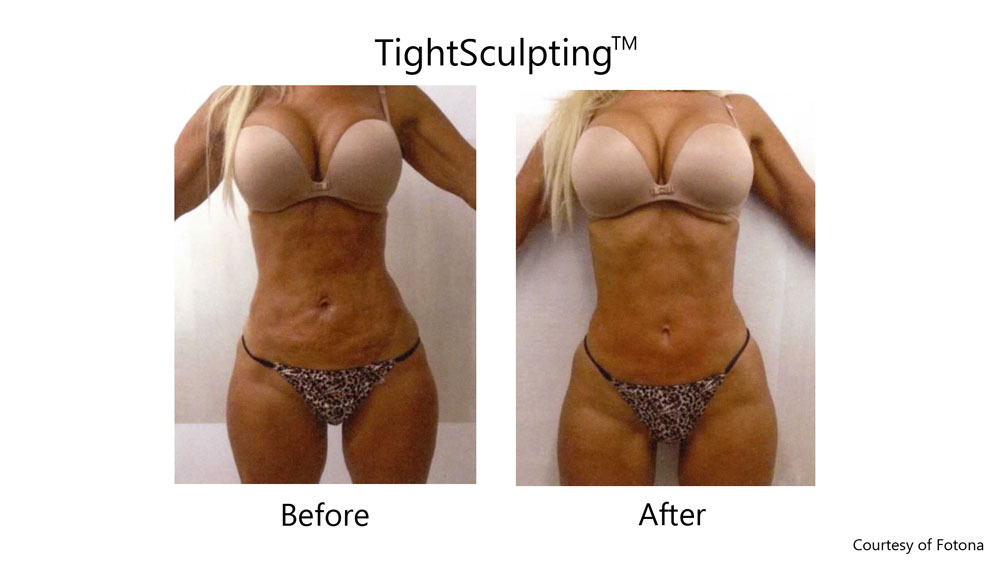
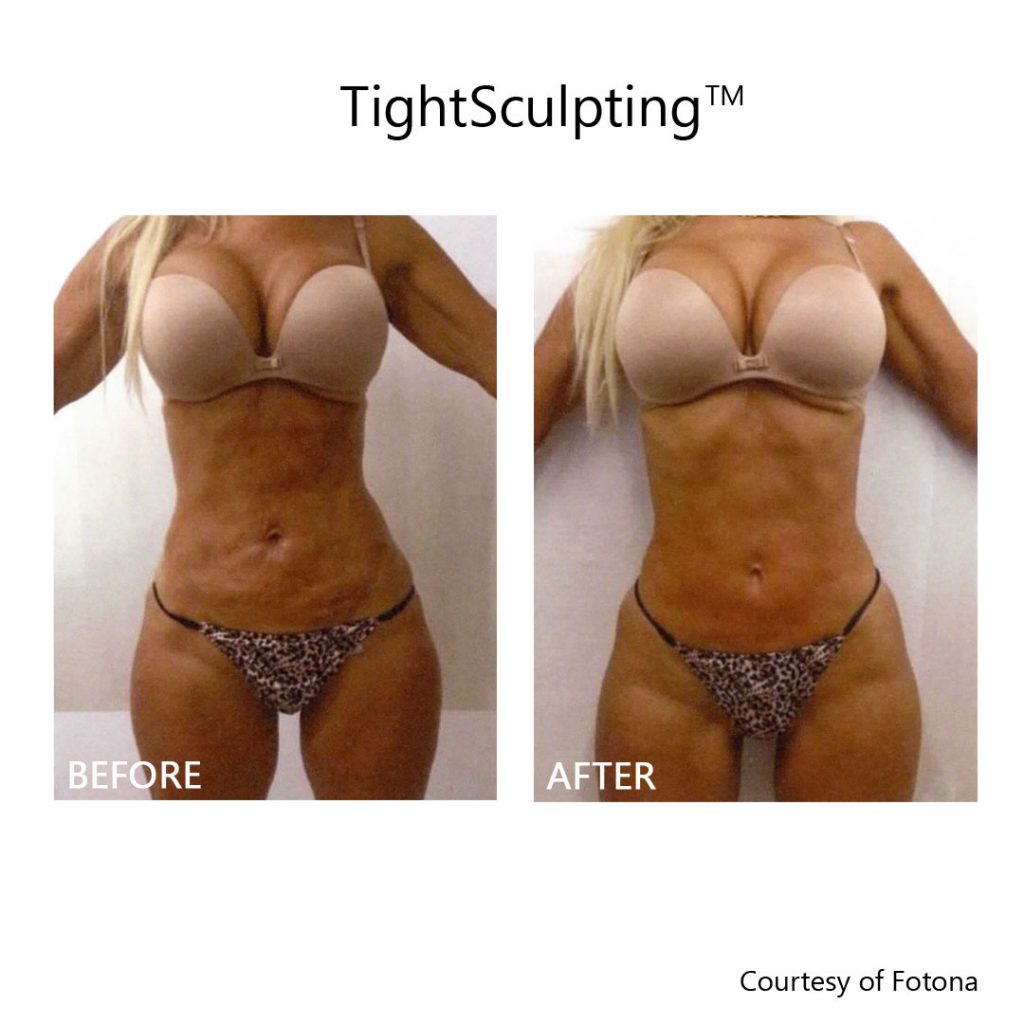
Laser skin tightening can be applied to areas with loose skin such as the abdomen, thighs, buttocks, arms, neck, back, decolletage, and breasts.
Laser treatment can be used for moderate non-surgical fat reduction for areas such as the buttocks, arms, obliques (sides of the lower back), and thighs.
Improvement of moderate cellulite, and smoothing of rippled and bumpy skin from cellulite in areas such as the buttocks, and the back of thighs can also be done with laser treatment.
Ablative and Non-Ablative Skin Tightening
Partial to Fully Ablative Skin Tightening
The original standard of laser skin tightening (in the early 90’s) was fully ablative treatment – light and heat energy applied to fully or partially remove layers of skin (epidermis) and transferring heat to the backbone of the skin (dermis) which forms the support structure of the skin. When the target temperature between 43-50 degrees celsius (depending on the individual patient) of controlled heat reaches the dermis, the dermis contracts. The dermis responds to this heat as an injury, and reacts with a healing response by producing more collagen.
Laser Resurfacing Before and After
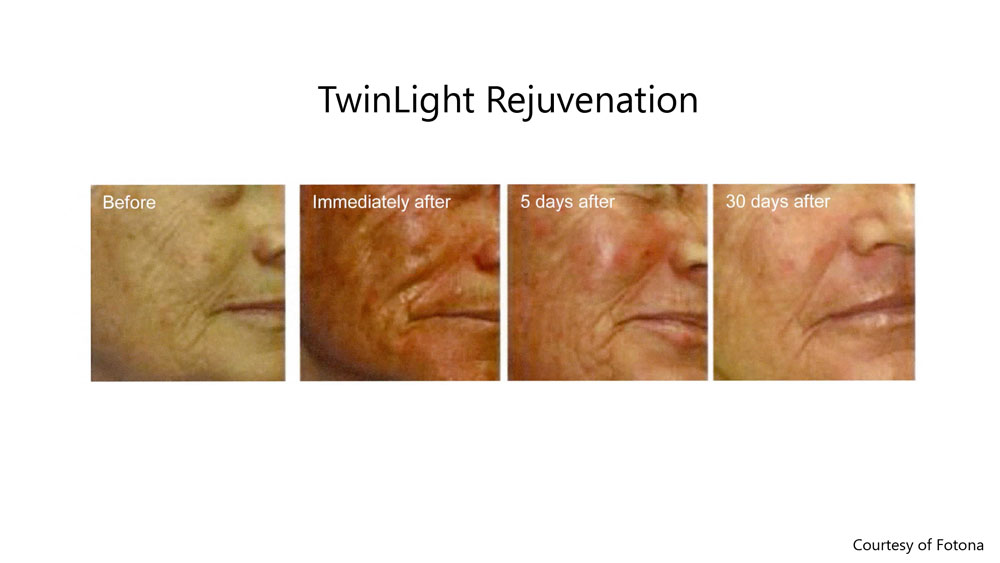
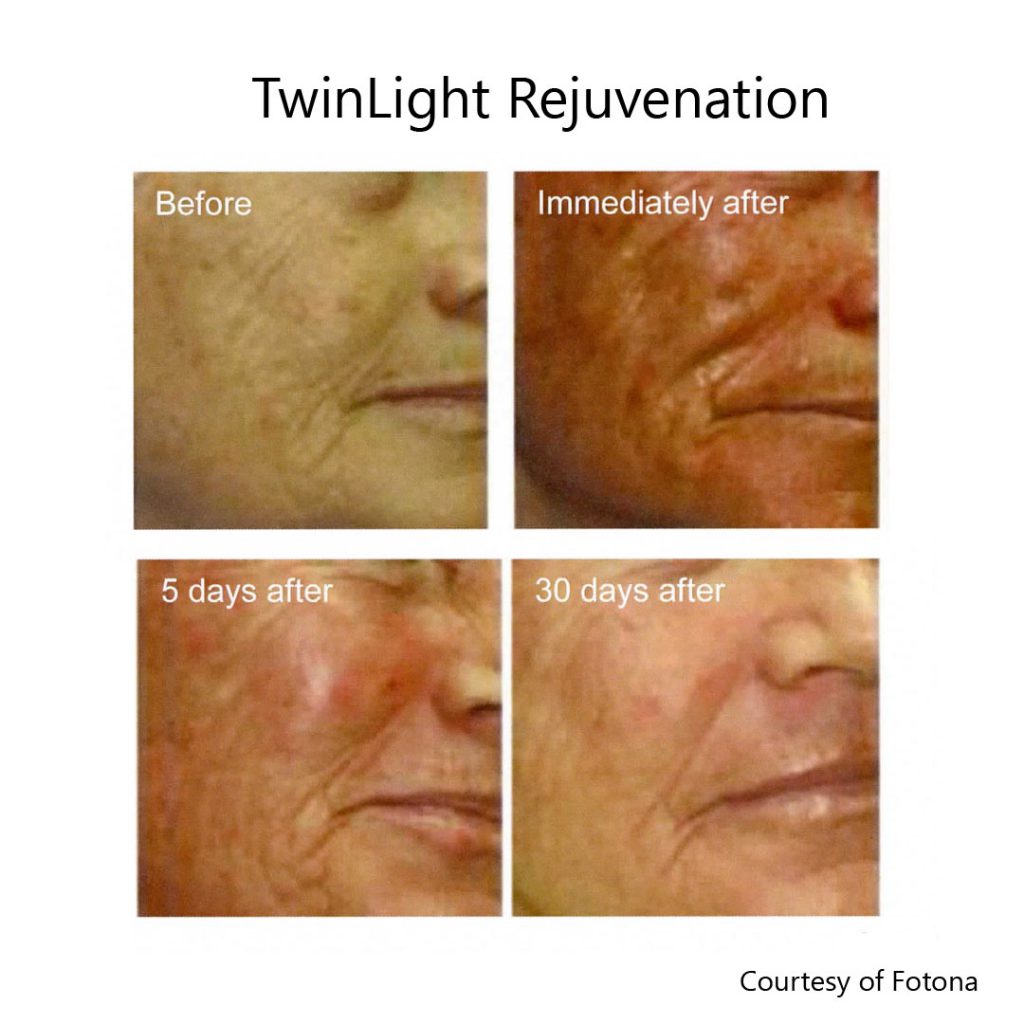
With a little recovery time, the outer skin layer (the epidermis) is replaced by a fresh new skin layer, supported by new collagen generated at the dermis for a visibly fresh, youthful skin texture. The tightened dermis gives the skin the tautness of younger skin.
Non-Ablative Laser Skin Tightening
Non-ablative laser skin tightening uses beams of energy to penetrate into the deeper layers of the dermis without ablating the outer layer of the skin (epidermis). While results may not be as significant as fully ablative treatment, non-ablative skin tightening can create impressive results making the skin more smooth, with less recovery time. This option is more practical for people needing to go back to work in about 1 week, or before an important event such as a wedding. Facial laser treatment can also be the best option in summer months when more direct sun exposure and heat can put the exposed dermis from fully ablative treatments at a greater risk of hyperpigmentation.
Laser Skin Tightening Before and After
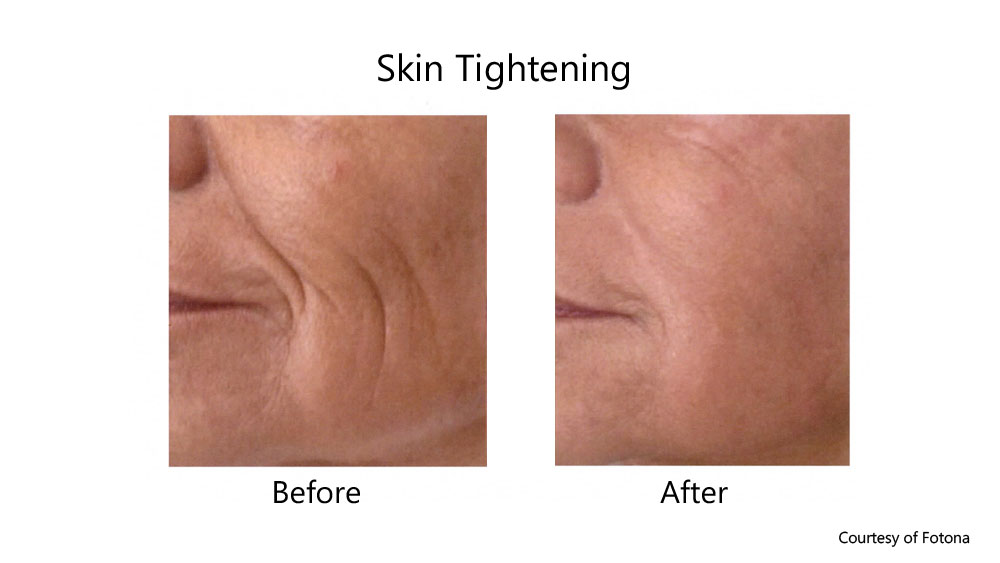
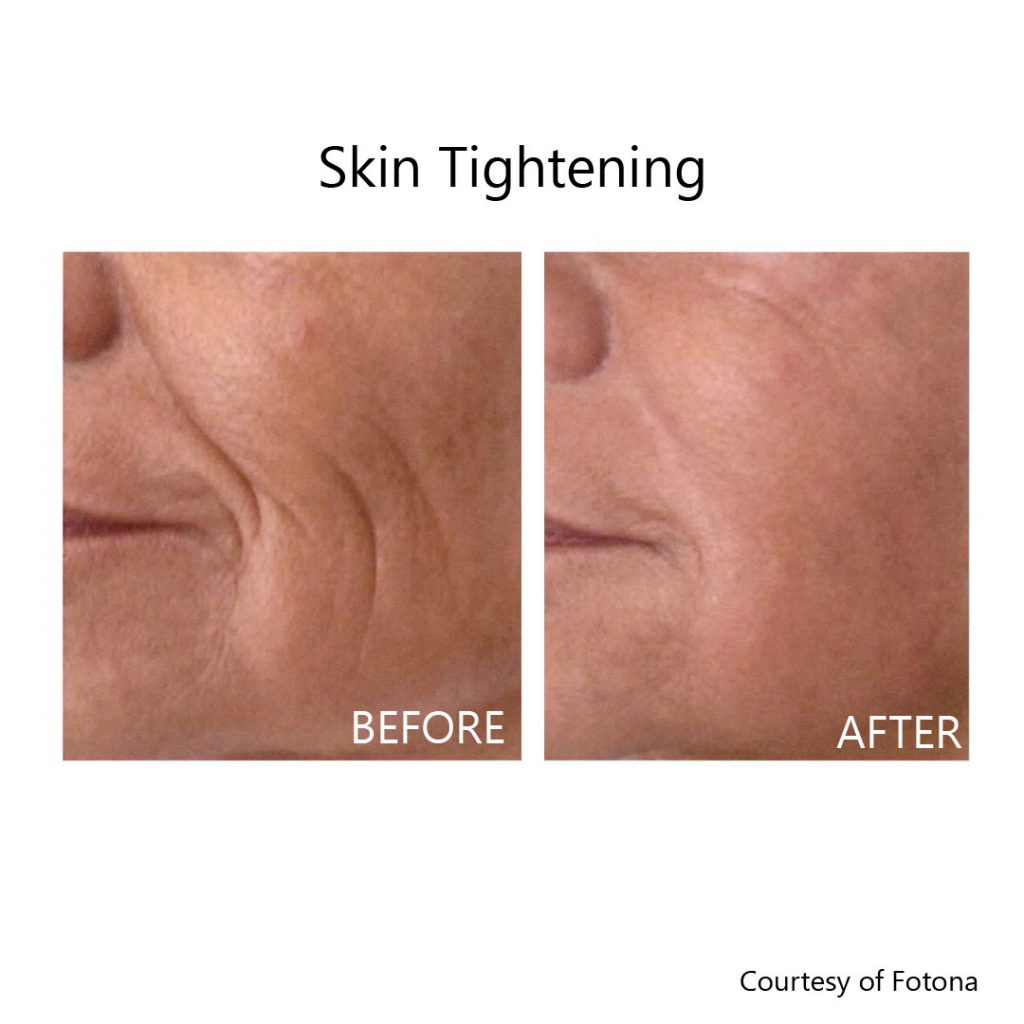
Non-ablative procedures include non-surgical skin tightening for areas such as the neck, and buttocks, but without the downtime.
Longer exposure of non-ablative laser settings can also be used for non-surgical fat reduction, while keeping the outer skin layer intact.
Laser Neck Tightening
The neck is an important part of facial rejuvenation, but is often overlooked. The neck is prone to several aging and body changes that can be treated with lasers.
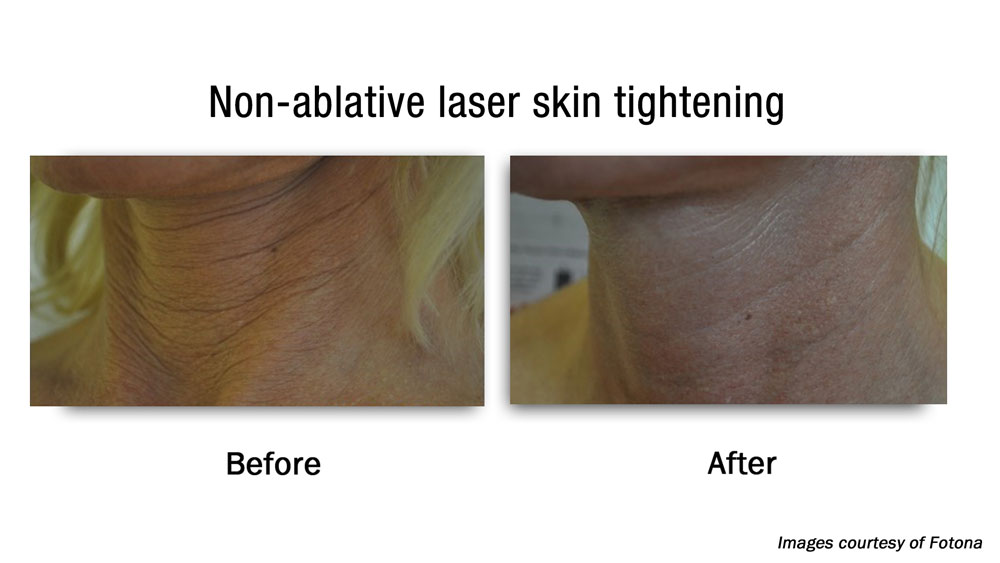
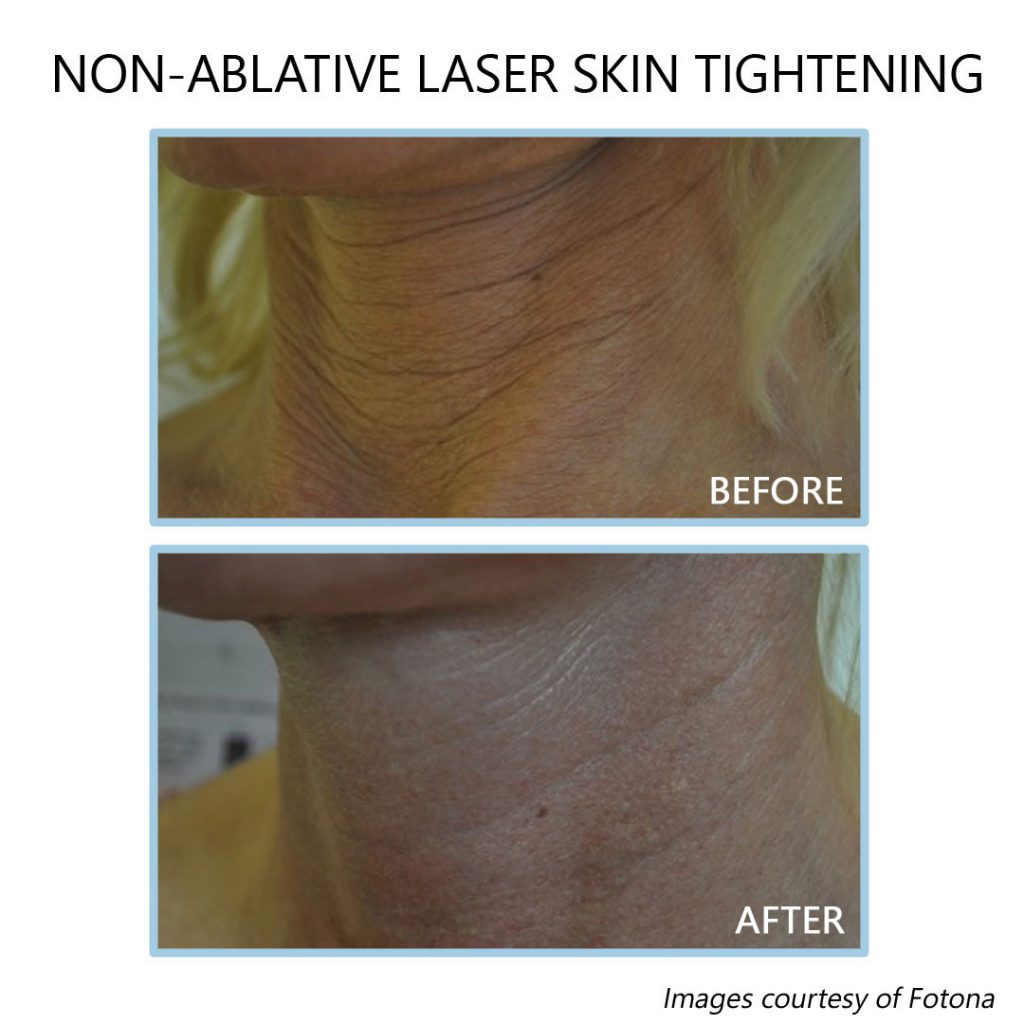
Neck skin can be thinned and loose, which lead to lines around the neck, to skin hanging from the chin area. The application of thermal energy can tighten the dermis, and generate collagen at the neck, resulting in a firmer, tighter look, with improvement in deep lines, and smoother textured skin. The heat from the laser treatment induces a collagen response in both fully ablative, and non-ablative settings in the neck area to tighten the backbone of the skin at the dermal level. Tightening can provide a mild lifting effect for the neck through dermis contraction.
Non-Surgical Chin Fat Reduction
The neck area below the chin has a tendency for accumulation of fat, which leads to common issues like a double chin. Depending on the amount of fat in this area, fat can be reduced with the laser. The difference here from a regular skin tightening laser treatment is that the laser is held in the same area for a longer period. The fat below the dermis can absorb heat better than the dermis, so longer exposure helps with fat reduction. However, it is important to note that laser fat reduction is best used for moderate fat for toning and sculpting, and is not recommended as a weight loss treatment.
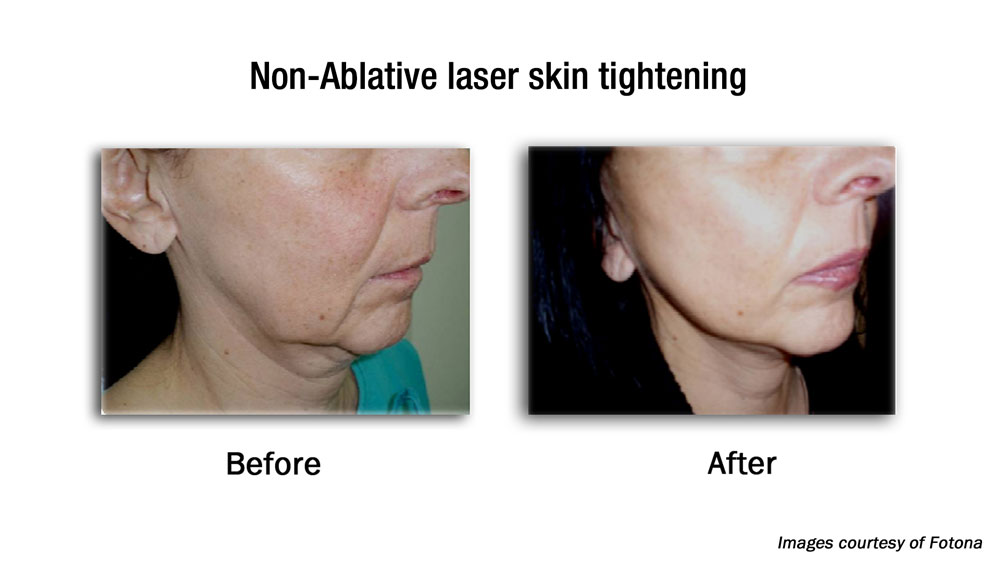
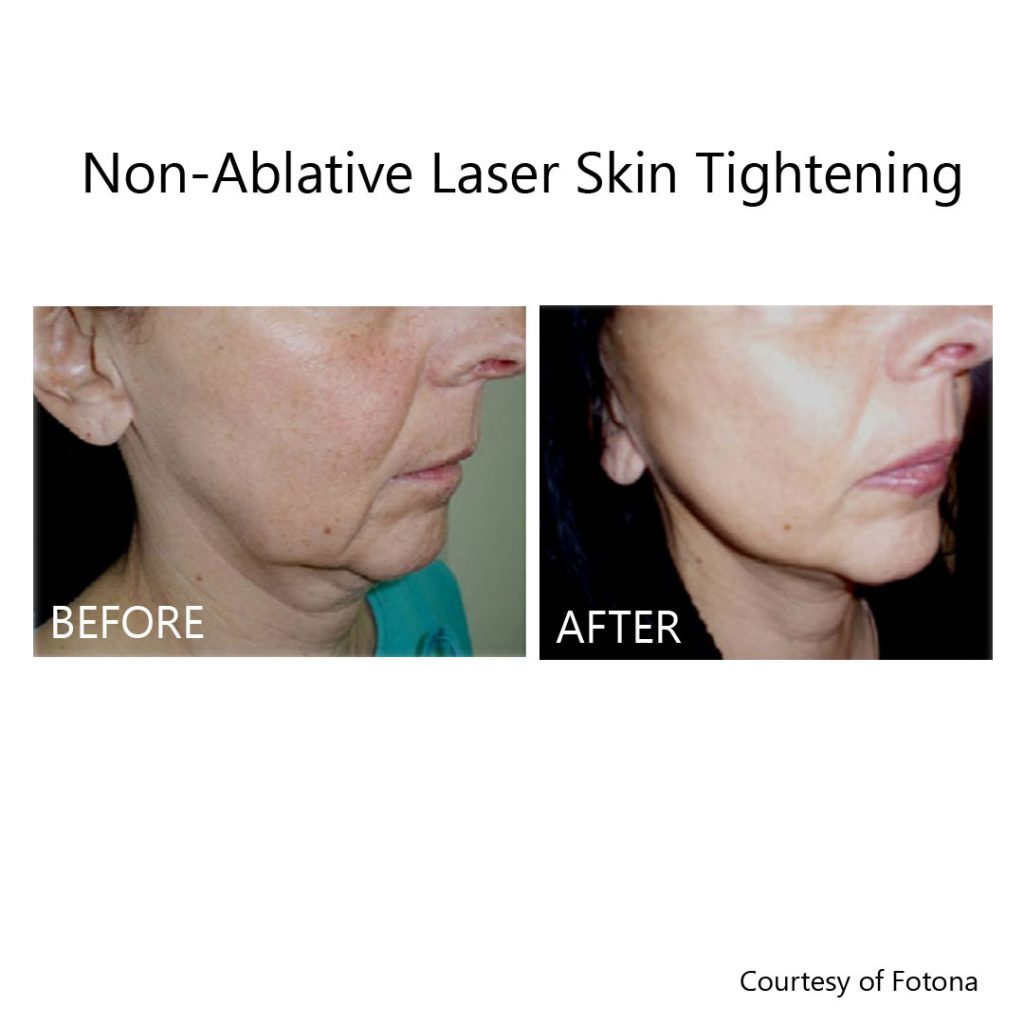
Improving Signs of Aging in Breasts, and Decolletage
Loosening of the dermis due to aging and sun exposure can affect the decolletage area of the lower neck and upper chest. Skin in this area can be first reddened through cumulative sun exposure, and skin can start looking rippled, wrinkled, and blemished. Laser skin tightening, often coupled with platelet-rich plasma (PRP) treatment, can help with reduction of wrinkles, lightening discoloration, as well as skin blemishes like age spots due to sun exposure. New collagen can be generated in the decolletage through the body’s response to the heat of the laser, with another collagen induction effect by using the growth factors of PRP injected into this area. Non-surgical rejuvenation of the decolletage is ideal for women who want an elegant, more youthful look readily complemented by any fashion choice.
The breasts can be affected from stretch marks from pregnancy/ childbirth/ breastfeeding, and the effects of aging. Visible stretch marks are the result of the increasing laxity of the dermis due to enlargement of breasts in lactation, which recurs when milk production is reduced. Larger and heavier breasts in women who have not gone through childbirth can also show stretch marks even if they never had children. Laser treatment of this area can cause the underlying dermis of the breast skin to contract and tighten, and produce more collagen to reduce visible stretch marks, and give a slight lifting effect to the breasts.
Skin Tightening of the Arms and Legs
After the face, the arms and legs are often where people first notice your skin, with fashion and function putting full skin focus on your extremities. The often uncovered arms and legs are subject to skin damaging sun exposure, and often carry extra fat in people who are overweight. When weight is lost, visibly sagging skin can be carried in the limbs, and can appear noticeably loose and rippled. The effects of aging with the loss of skin tone can also appear at the extremities. Loose skin of the legs can have a moving ripple when walking, and can be visibly lax even when stationary.
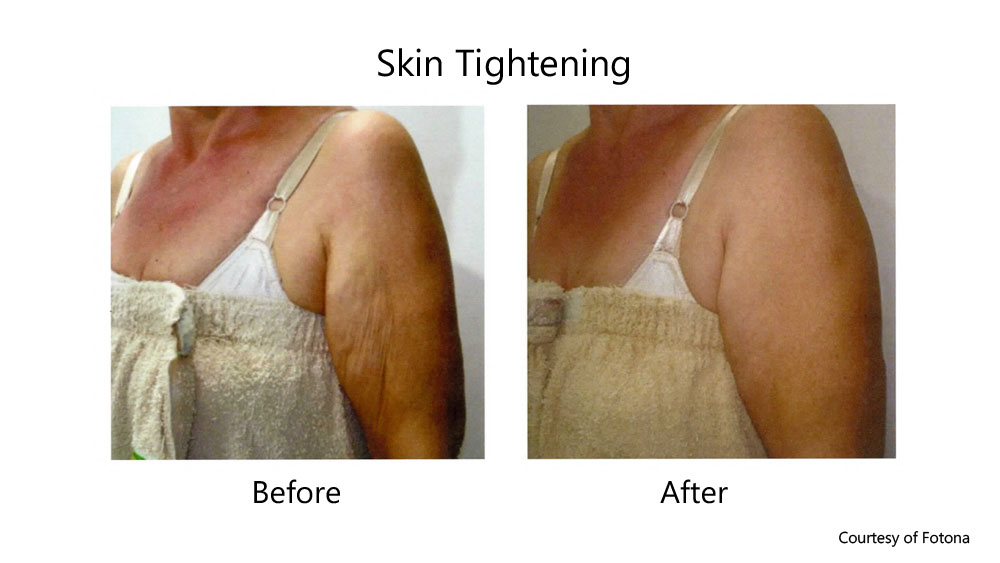
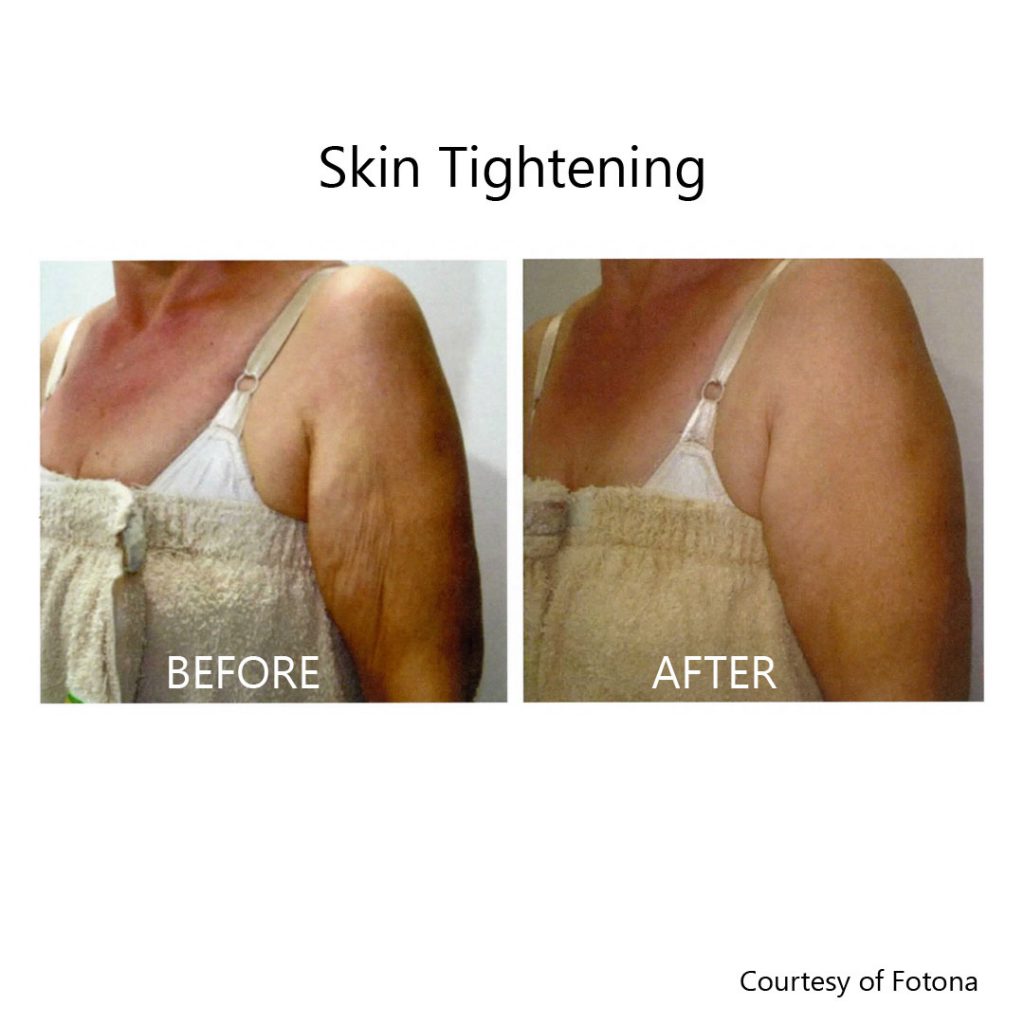
The skin of the arms can be tightened quickly and safely with the same laser handpiece as the face for a smooth contour, and tautness to the touch. The wider area of the thighs can be treated with a wider laser scanner attachment to reduce overall treatment time. Tightened skin of the thighs also reduces the flapping movement of loose skin when walking.
Laser Skin Tightening Thighs Before and After
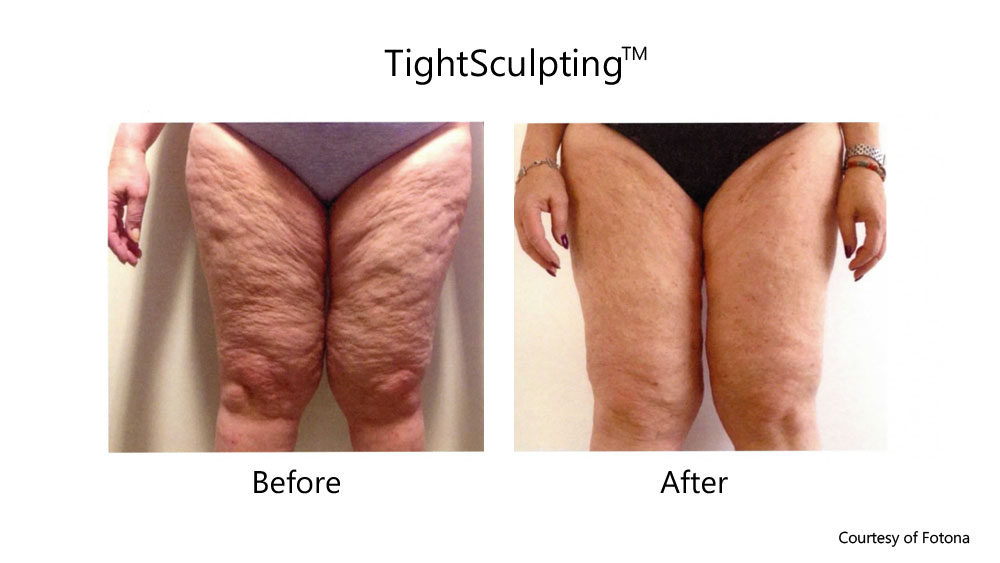
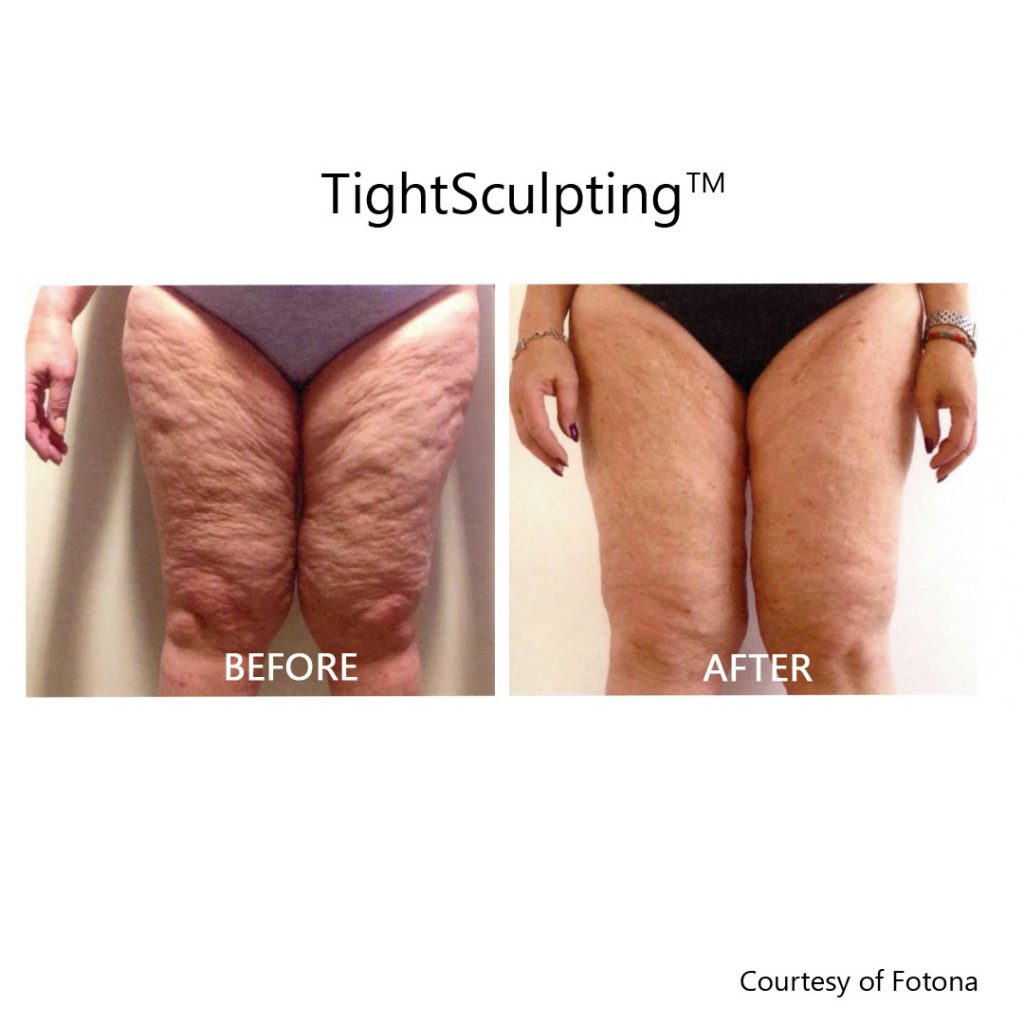
Non-Surgical Reduction of Stretch Marks from Childbirth and Weight Loss
Stretch marks, or medically termed as striae distensae, are the result of the loosening of the backbone of the skin (the dermis), resulting in visible streaks or stripes on the skin surface. Stretch marks have various causes, from the stretching of the abdominal skin due to childbirth, post-weight loss in various parts of the body, and at the breasts as mentioned previously.
Laser Skin Tightening Stomach Before and After
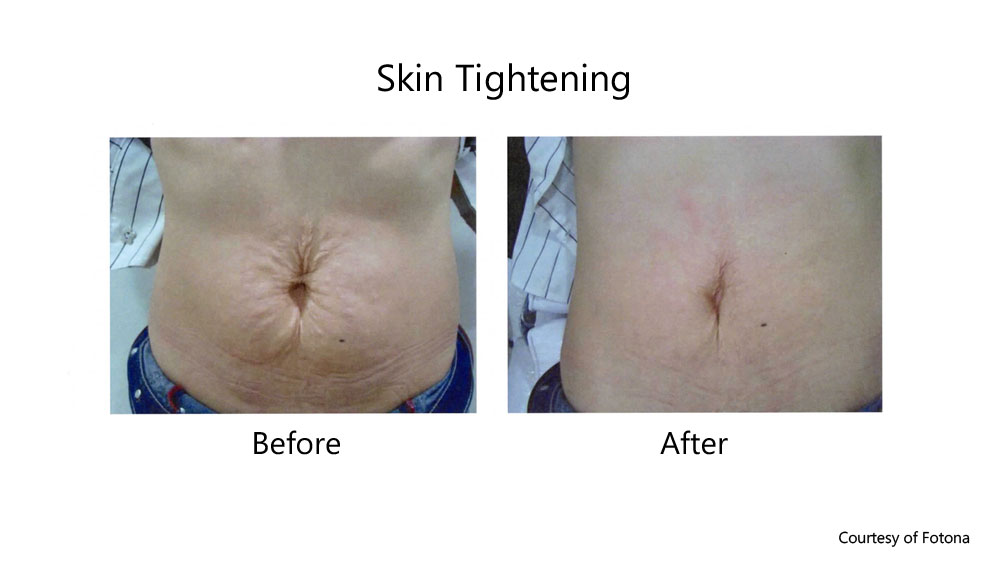
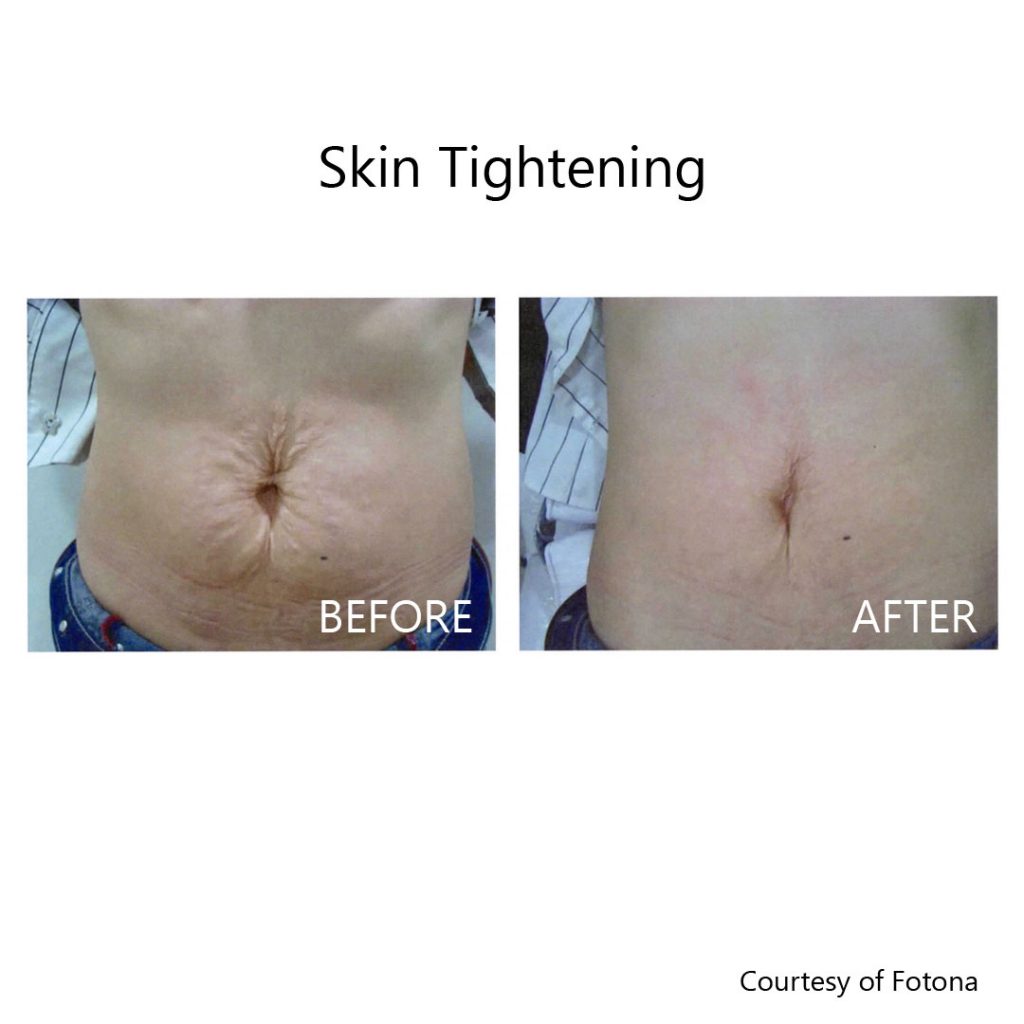
Treatment of stretch marks entails tightening the dermal layer, right below the surface skin layer. Tightening of the dermis also contracts the surface skin layer, closing the visibly stretched gaps at the skin surface. Treatment of stretch marks will likely take more than one treatment session.
Non-Surgical Fat Reduction
Non-surgical fat reduction can be done safely with gradual heating using the ND:Yag laser. Advancements in laser technology such as greater heat control, a more gradual raising of temperature, and a full range of customizable beam widths are essential to prevent damage to the skin and the layer of fat that provides youthful volume. Fat generally absorbs more heat than the outer and inner layers of the skin, so heat must be monitored during fat reduction treatment to ensure no damage to the skin layers. The doctor’s skill with the laser, and knowledge of anatomy are crucial in preserving the essential fat layer, while reducing excess fat. The essential fat layer provides skin cushioning, youthful volume, and suppleness, and also channels nutrients to the skin for overall skin health.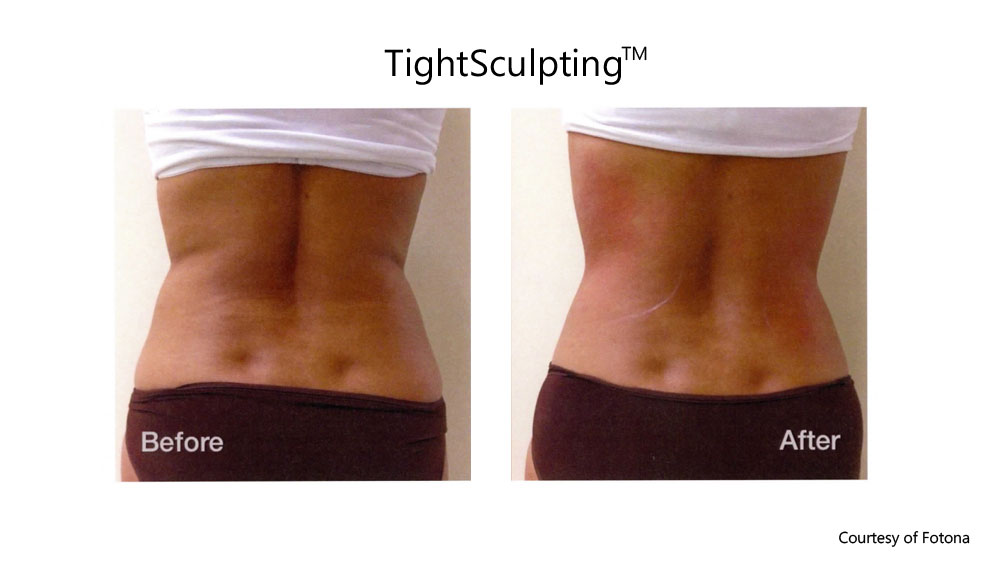
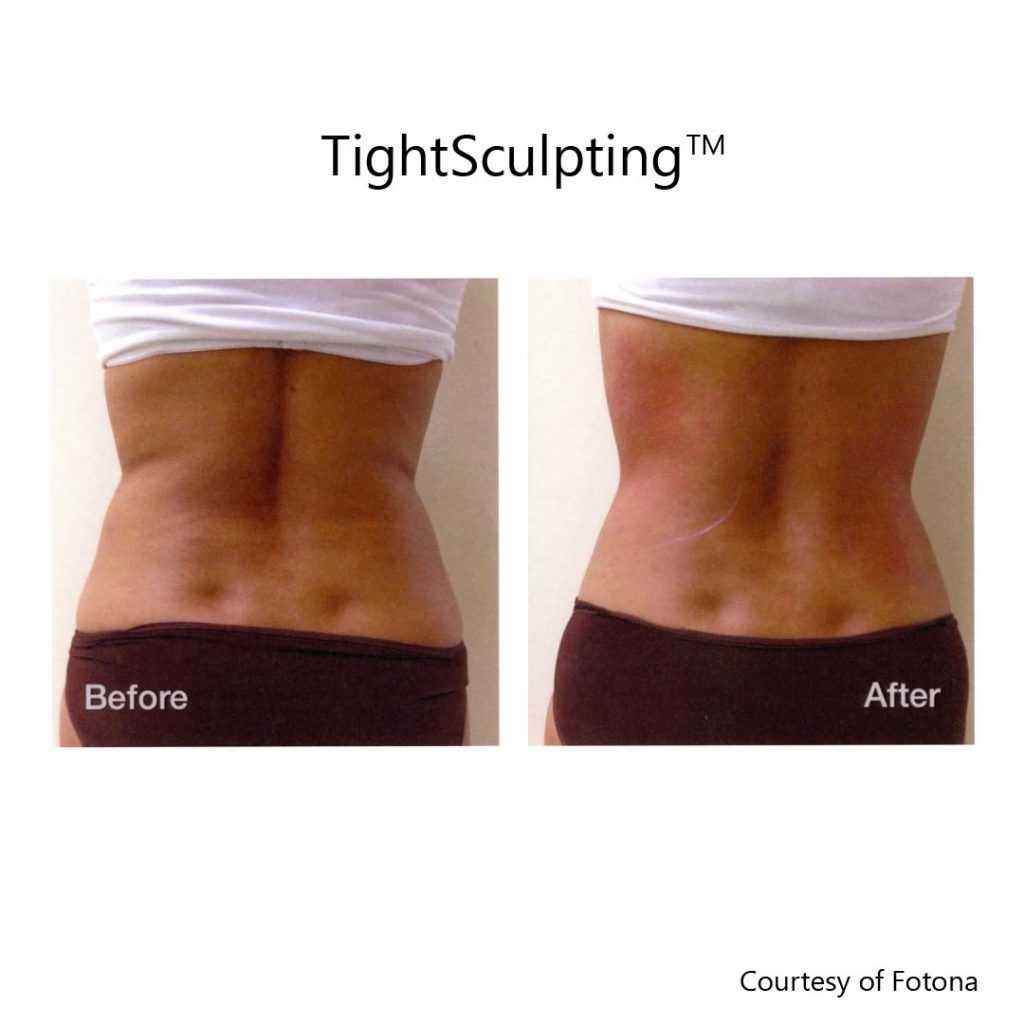
Caution in Non-Surgical Fat Reduction
Laser fat reduction is highly cautioned and should only be done by the most experienced doctors. Laser fat reduction requires longer beam exposure than skin tightening or laser resurfacing treatments, and reaching and treating the underlying fat requires a surgeon’s knowledge of internal anatomy. Laser fat reduction is not a procedure that should be done by aestheticians and technicians who mostly deal with surface skin layers. Reduction of too much fat and/or overexposure of lasers can lead to pain, burning of the skin, and essentially cooking the fat. Excess laser fat reduction also damages the skin, and the skin’s ability to draw nutrients from the essential fat layer, so having this procedure done with a knowledgeable surgeon is critical in avoiding complications.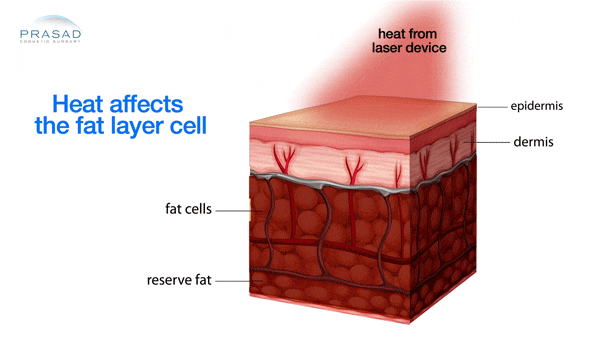
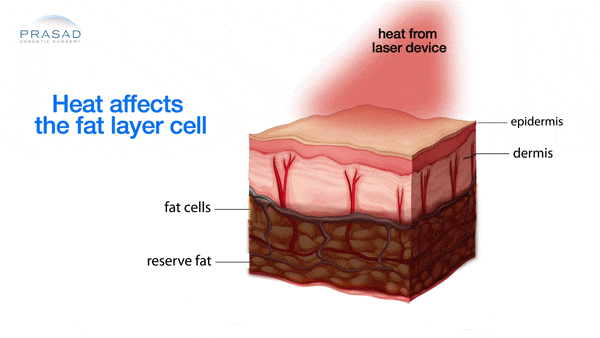
EXCESS HEAT FROM A DEVICE CAN “COOK” THE ESSENTIAL FAT LAYER, WHICH PROVIDES THE SKIN SUPPLENESS AND YOUTHFUL VOLUME, SO IT IS CRUCIAL TO PREVENT EXCESSIVE FAT REDUCTION IN HEATING DEVICES Y GOING TO A REPUTABLE AND EXPERT DOCTOR.
Cellulite Treatment and Skin Tightening
Limited cellulite reduction and tightening of its affected skin can be done on larger areas of the body such as the thighs. and buttocks. Mild cellulite on the buttocks, and the thighs can be treated with a combination of laser tightening for dimpled and rippled skin caused by cellulite, and the reduction of the fat that causes cellulite. Non-surgical laser reduction of cellulite is limited to mild to medium cases, where treatment is focused on improving rippling and irregularities of the skin’s surface, and reduction of mild cellulite. Laser cellulite treatment also requires other procedures such as massage, and additional laser light therapy outside of the Nd:YAG laser.
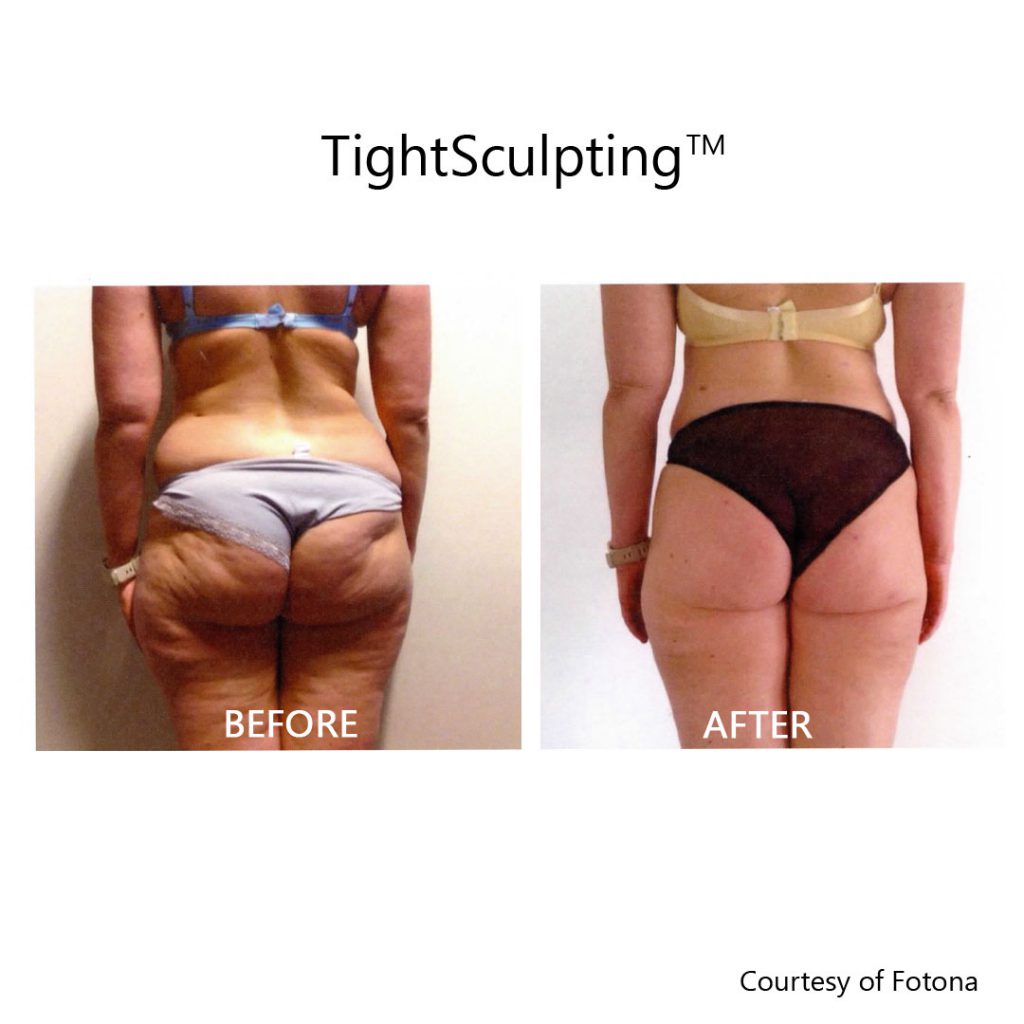
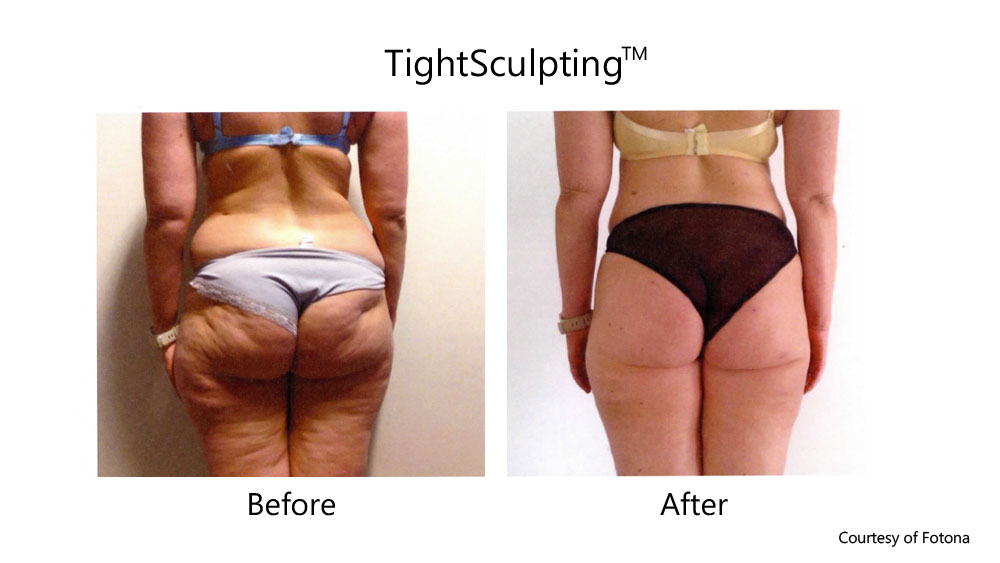
Most non-surgical laser treatments can be performed quickly (even over your lunch hour), with options for little to no downtime for recovery.
How long does laser skin tightening last?
The duration of the results of laser skin tightening varies from person to person because it is determined by several factors such as: individual skin characteristics, the laser treatment used, and the level of skin laxity. Laser skin tightening effects can last anywhere from six months to two years. However, it’s important to remember that the natural aging process will continue, and the skin’s firmness may gradually deteriorate over time. Some people may choose to have touch-up treatments on a regular basis to help sustain their results.
How much does laser skin tightening cost?
Cost can vary depending on a number of factors, including the location, the clinic, the practitioner’s expertise, and the extent of treatment required. Prices may also vary depending on the type of laser technology used. The total cost will be determined by the number of sessions required, as well as any other factors unique to your situation.
While cost is an important consideration, it is also important to prioritize the practitioner’s expertise and reputation, as well as the safety and quality of the treatment. Always go with a reputable clinic staffed by experienced professionals who put patient safety and satisfaction first.
Patient Reviews
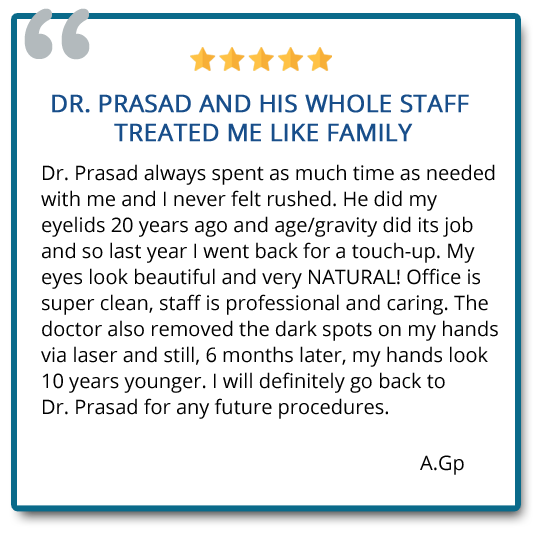
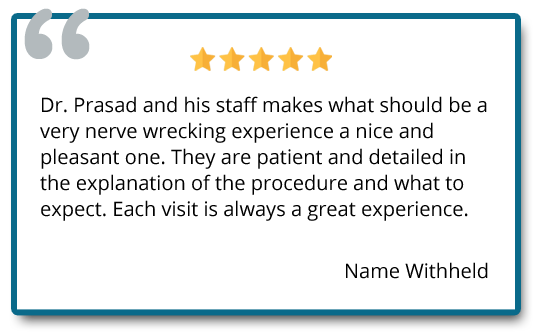
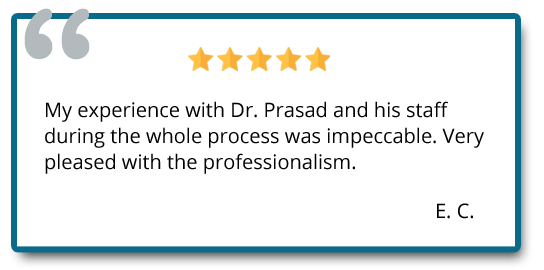
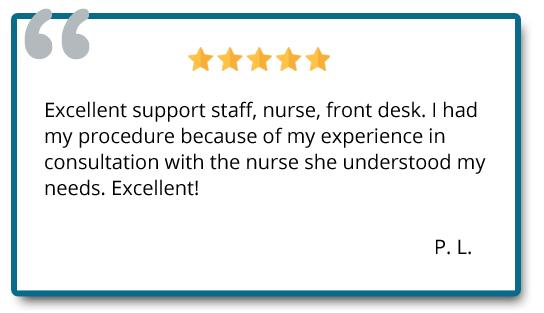
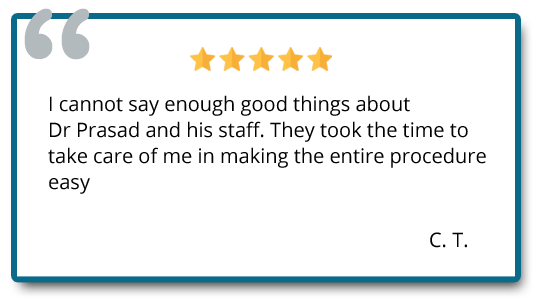
Laser Skin Resurfacing Manhattan New York City and Garden City Long Island
Schedule your appointment today by filling out the contact form below, or by calling (212) 265-8877 for our Manhattan location, or (516) 742-4636 at Garden City, Long Island.
